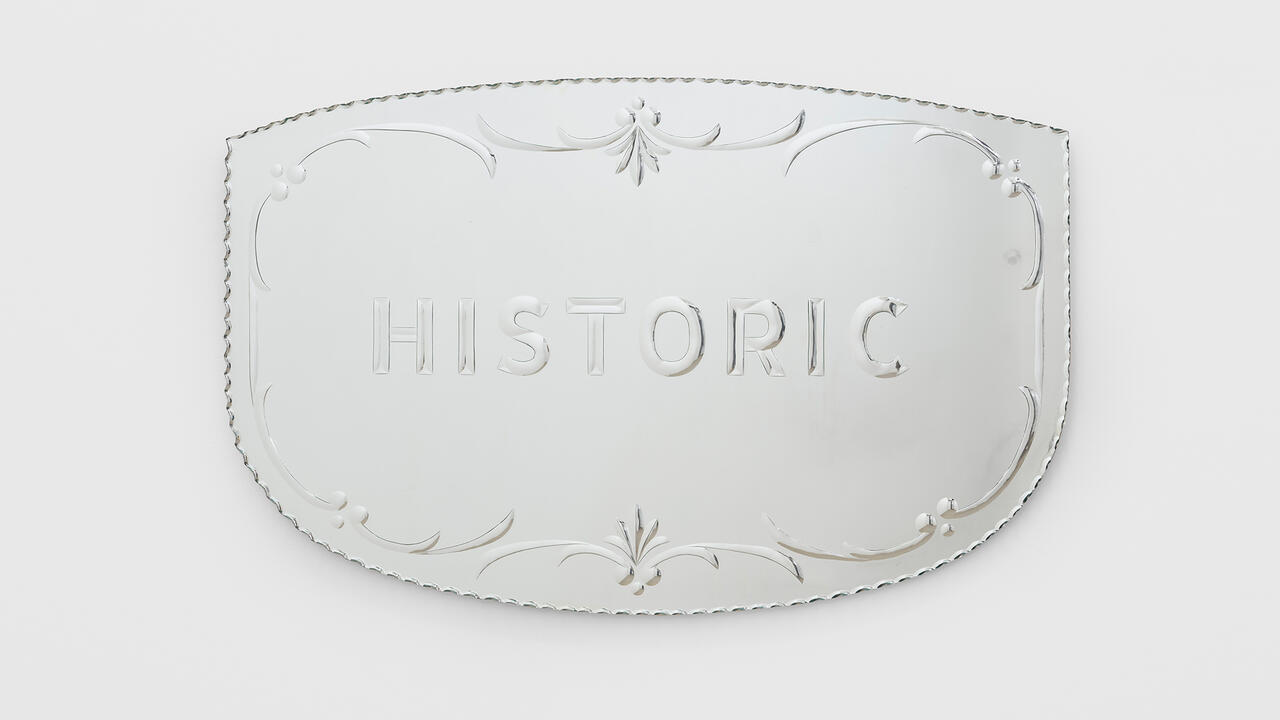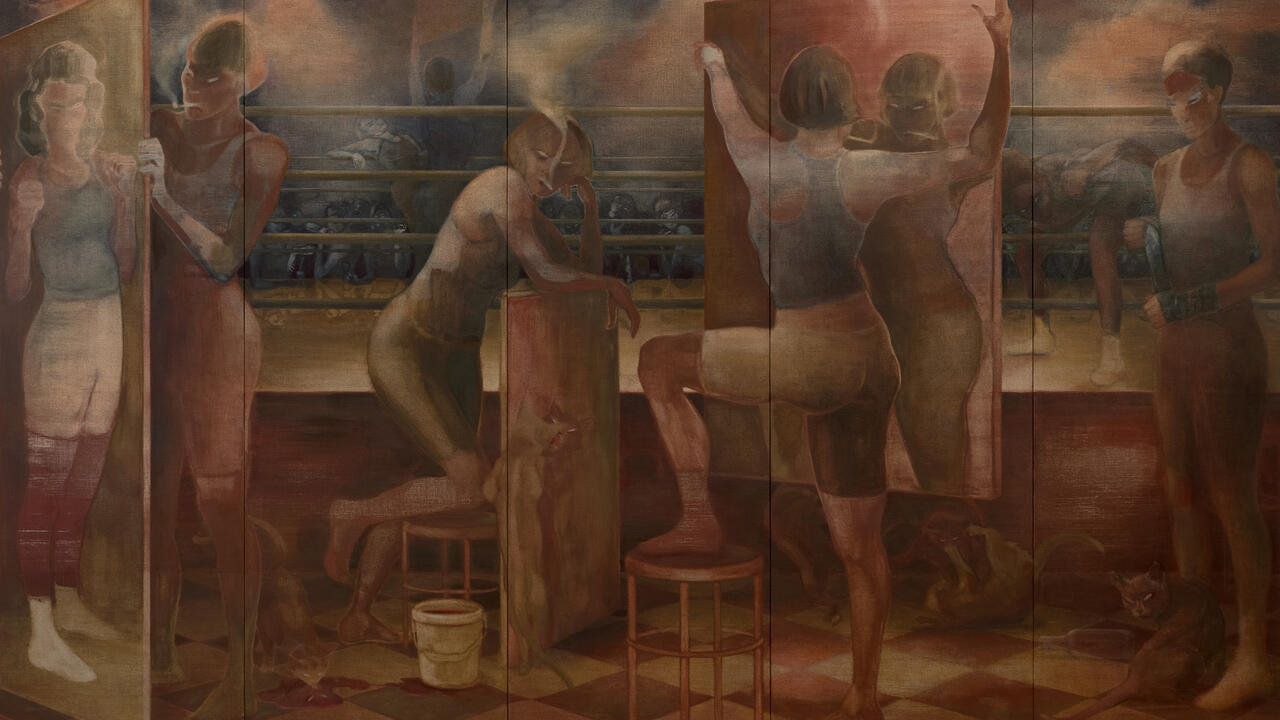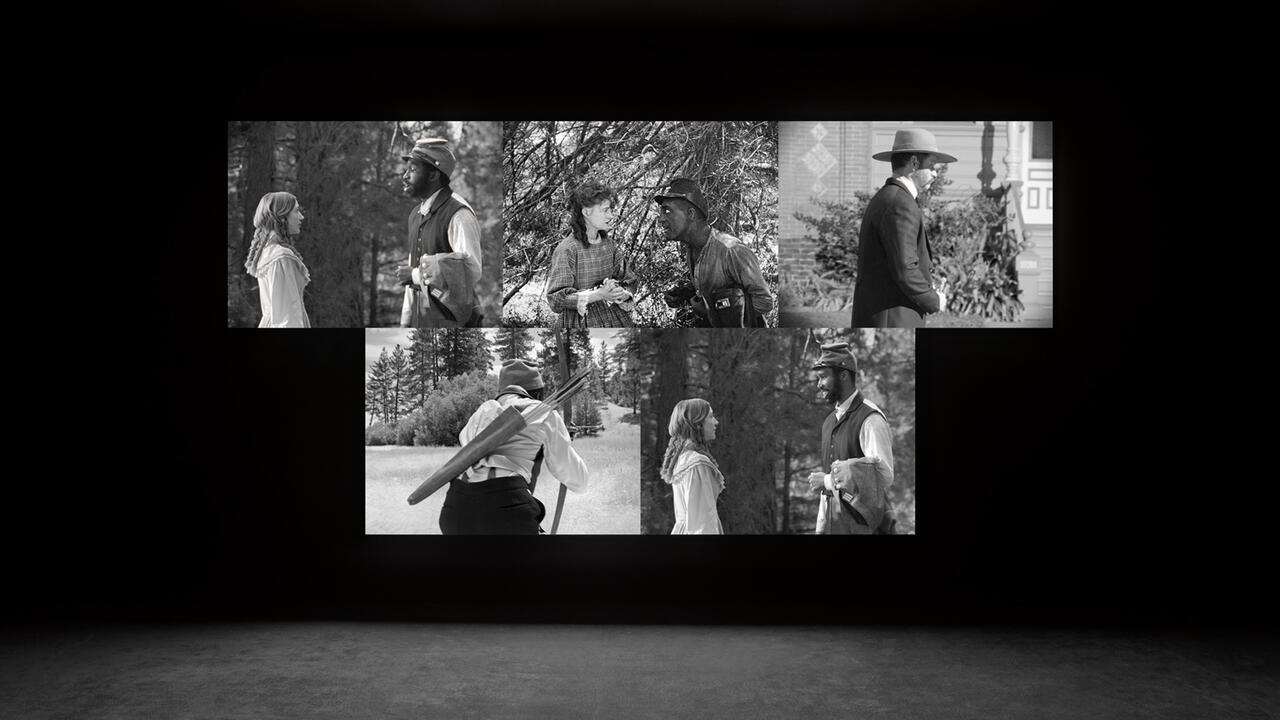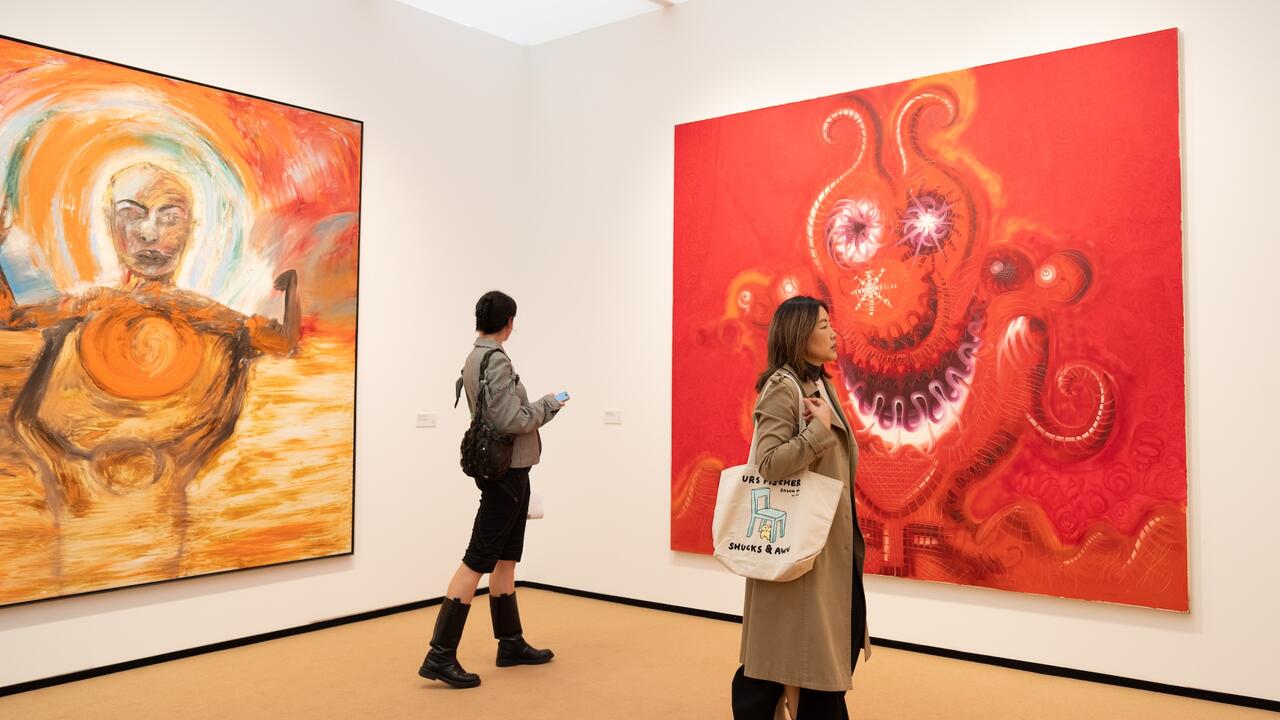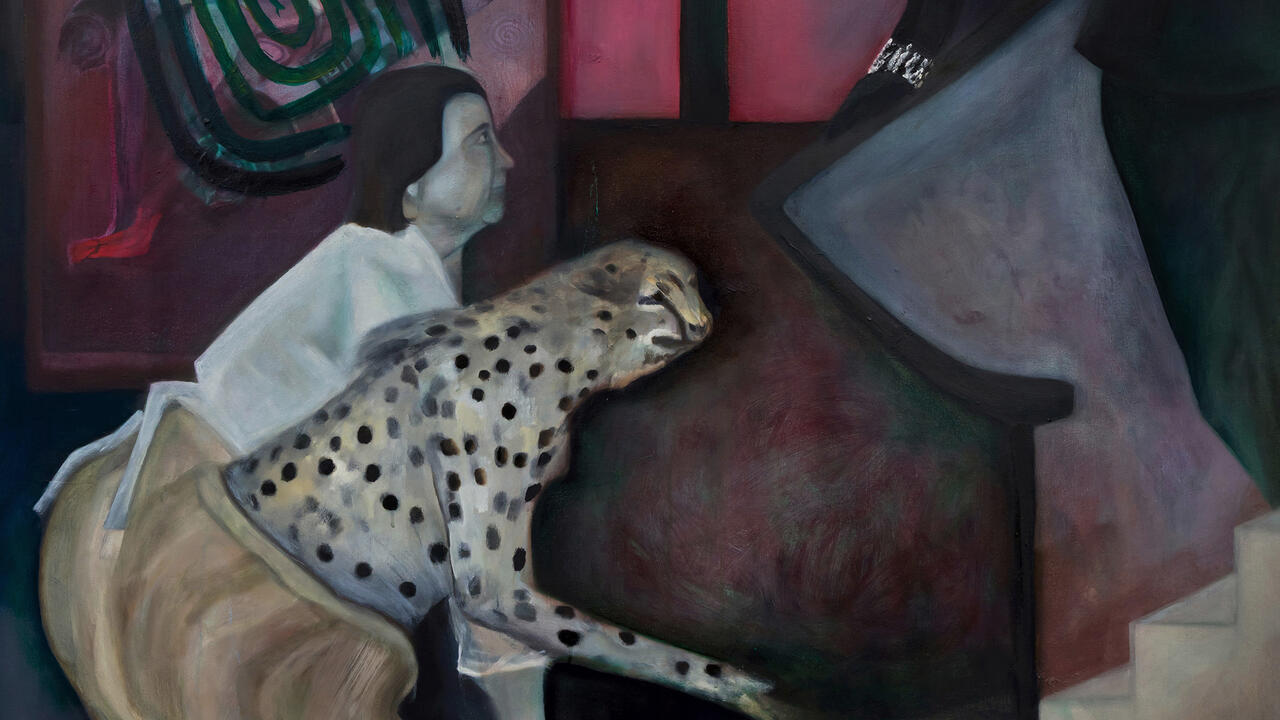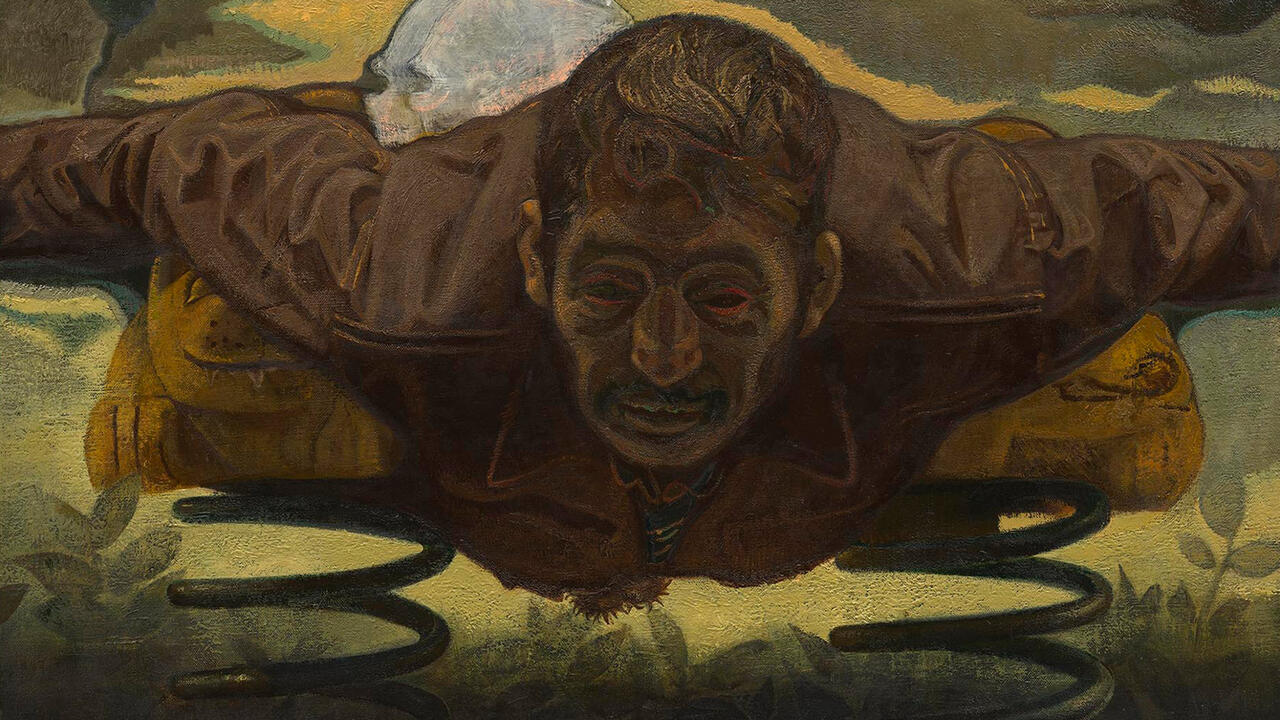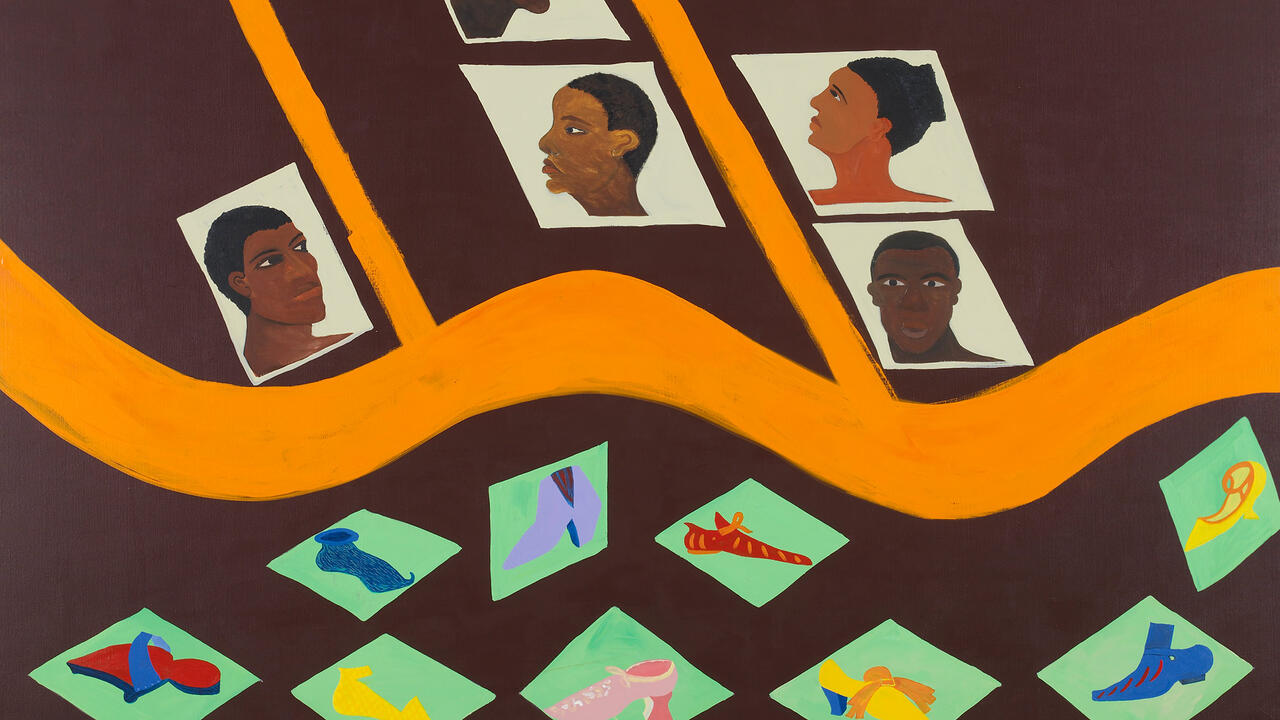Sarah Lucas Mocks Symbols of Power
A show at Sadie Coles HQ heralds the welcome return of an artist whose work is elegantly funny and mystical
A show at Sadie Coles HQ heralds the welcome return of an artist whose work is elegantly funny and mystical

Sarah Lucas staked her territory during the 1990s heyday of Young British Art with plain-speaking work about gender; about how sexual identity gets encoded in objects, how men and women relate to each other through everyday items and images, and what our expectations might be of the kind of objects and pictures a male or female artist makes. Her subject matter was serious, but cleverly refracted through the raucous, boozy prism of unreconstructed sexism and consequence-free hedonism sanctioned by that decade’s pop culture. Lucas has a wicked sense of humour – conjugal bliss, for instance, might be depicted by propping a soiled mattress against a wall, and letting a bucket and two melons stand for the woman and a pair of oranges and a cucumber for the man (Au naturel, 1994) – but her work often displays a feel for traditional artistic concerns; sculpture and materiality, weight, composition. It’s a combination that pissed off all the right people – those who thought found materials should speak of the ‘poetry of everyday existence’, or some similar mawkish sentiment. Then, around a decade ago, the work seemed to run out of steam. Lucas’s deft use of prosaic materials – cigarettes, beer cans – became heavy and humourless. Bad sculptural puns – cigarettes arranged in the shape of, say, a coffin – seemed to suggest her knack for interesting material juxtapositions (not to mention juxtapositions of subject matter) had gone to seed and given up. Which is possibly why her first London solo exhibition in two years was so surprising.

One of the strengths of the 15 new sculptures exhibited in Sadie Coles’ new Mayfair space, collectively titled ‘Penetralia’, was that they looked completely out-of-kilter with anything else showing in London at the end of last year. White plaster casts of erect penises and craggy blades of flint held aloft on roughly-chopped blocks of wood by bendy wire supports, these strange combinations of objects look perversely old-fashioned: like some lost, psycho-sexual phase in mid-20th century British art – 1950s ‘New British Sculpture’, Lynn Chadwick, William Turnbull, Kenneth Armitage, by way of Wilhelm Reich, or the St Ives’ artists if they’d said ‘sod it’ to Modernist abstraction and started a pagan nature cult instead. Many of the titles suggested that this wasn’t too far wide of the mark either – Ax, Satyr, Druid, Owl, Imp (all works 2008).
Arranged in rows on waist-high plinths and looking like trophies the arch-groupie Cynthia Plaster Caster might have made of a megalithic rock god, the symbolism at play was enjoyably accessible though hardly subtle. The phallus is as symbol of power, but a temporary one; it can also look small, weak and ridiculous. Flint, struck together with flint as means to make fire, also has an elemental, transitory charge. Then there’s flint as tool and tool as slang for penis and penis as subject of probably more slang words than anything else (apart from perhaps sex itself). This includes the word ‘wood’; here dark, solid, heavy cubes of wood that look like they were foraged from the deep heart of an ancient forest and which function as miniature plinths. The way the plaster and wire constructions were fixed to these blocks suggest that perhaps these plinths were themselves energy sources – like Joseph Beuys’ ‘batteries’ made from fat or felt.
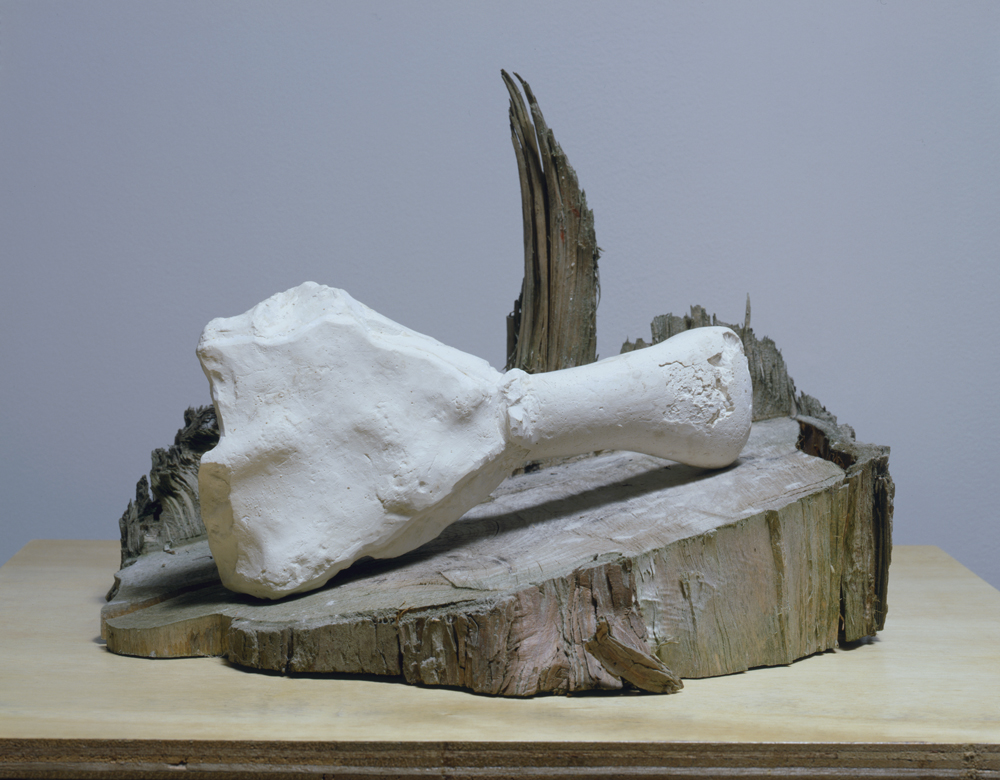
The basic metaphoric theme, language games and simple set of materials for each work allowed Lucas’s imagination to run free with formal variation and composition. In Dayo and Eros, for instance, the penis casts rest head-down on their wooden plinths, fused to the flint-like forms which grow upwards in a manner that makes the objects look like Stone Age implements – or, slightly more disturbingly, as if strange white fungi are sprouting from the top. In Martyr, the phalluses are combined in a cruciform atop a long plaster stem, and in Imp a cast of a finger pokes suggestively through the groove of a wing-shaped piece of bark. Up close, the spindly wire prongs that prop up these strange fertility totems, provide delicate material counterpoint to the heavy solidity of the wood and plaster.
In swapping urban grit for pagan bucolicism, Lucas has created a body of work that is refreshing and elegantly funny, its more mystical aspects emphasized by images and texts in an accompanying artist’s book, made in collaboration with Julian Simmons. In the midst of so much art that seems exhausted from striving to position itself with the right references and art-historical savvy, ‘Penetralia’ heralds the welcome return of a currently under-appreciated artist.
Main image: Sarah Lucas, 'Penetralia', 2010, installation view. Courtesy: © Sarah Lucas and Gladstone Gallery, Brussels










